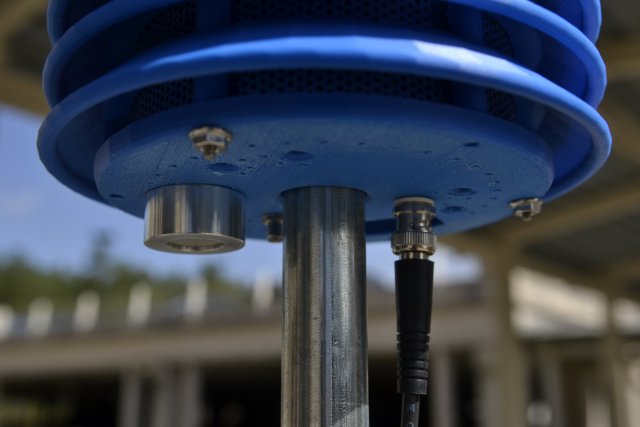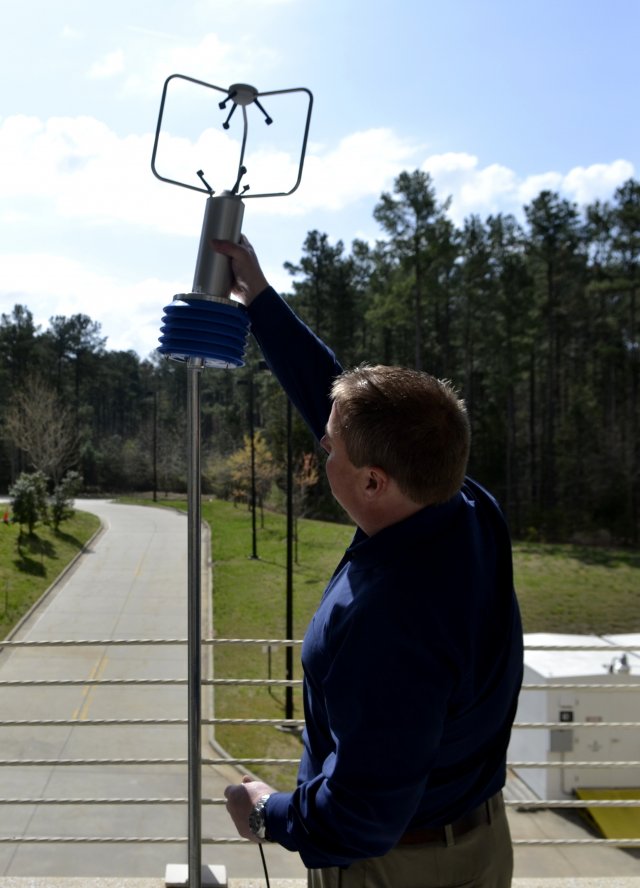Fenceline Monitoring
Published May 11, 2018
Finding air pollution leaks with smaller, faster, cheaper measurement technologies
Next generation air measurement technologies are making it easier to track air pollution leaks from pipes, seals, and other areas at industrial facilities. These new high-tech tools can be used to help determine where leaks are occurring and what chemicals are being released.

Not all pollution comes from smoke stacks. Undetected leaks (called fugitive emissions) are a significant source of pollution and can come from industry, refineries, energy production, and natural gas pipelines. Fixing these leaks can protect workers and nearby communities, reduce operating costs for companies, and assist regulators with implementing source emissions and air quality standards under the Clean Air Act. “
“The first step in understanding and controlling fugitive emissions is detecting their presence,” says Eben Thoma, an EPA researcher who is on a research team developing and testing a wide array of new air measurement technologies.
One of these technologies is the low-cost passive sampler, which is a small tube (about the diameter of a pencil) with carbon sorbent material inside. Multiple tubes are hung around the fenceline of the facility and uncapped to expose them to air. After a week or two, the tubes are recapped and sent to the lab for analysis. Users then get a “map” of air pollutants like benzene that are present at the fenceline, which can be used to help understand the source of leaks.
“Although powerful, sensitive, and simple,” Thoma says, “passive samplers have some limitations: they don’t provide instant feedback, and they do not factor in wind direction.” To address this limitation, areas of increased levels of pollutants found by passive samplers can be investigated further with more sophisticated measurement tools like EPA’s low-cost SPod, a solar-powered “drop in place” sensor system that provides real-time fenceline data.
The SPod is an open-source design under development. “The SPod helps you see where the leak is coming from by instantaneously correlating with wind direction with elevated concentrations,” Thoma explains.

Complementing the passive samplers and sensors like the SPod, new mobile measurement technologies such as GMAP OTM 33 can be used for onsite and offsite leak inspection applications. These sensor technologies are fitted onto a vehicle that can be driven around the perimeter of a facility to check for air pollutants coming from a facility.
“Ultimately, fully automated mobile sensors will be integrated into field work trucks and data will be sent to the cloud for analysis,” Thoma predicts. “As workers go about their normal duties, their smart trucks will be looking for leaks.”
These and other advances in measurement technology are improving the ability to protect air quality and public health. They are assisting industry to fix leaks and reduce their operating costs, helping air quality managers improve inventories of air pollution emissions, and assisting regulators with enforcement and compliance of the nation’s air quality standards.
